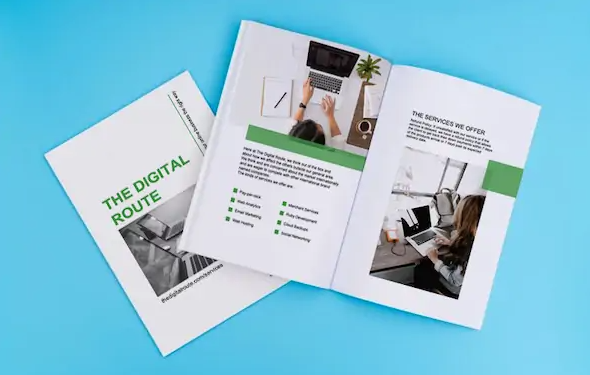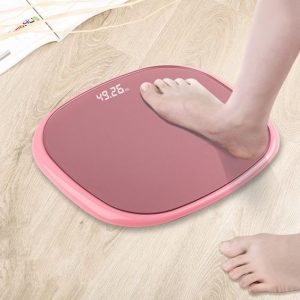Creating a Booklet Design

When creating a booklet, it’s important to consider the project mission and align it with the brand aesthetic. This will also help determine the audiences your booklet aims to target.
Adding visual elements like photos, icons, illustrations and videos can make your booklet/catalog more engaging. They can also represent complex ideas in an easy-to-understand way.
Table of Contents
Creating a Booklet Template
Booklets can be used for a variety of purposes. Whether you want to promote your brand, share a new hobby with readers or create an interactive catalog for your company’s products, the content that goes into them should be carefully planned and designed. To ensure that your booklet design is visually appealing, it’s important to keep in mind the needs and wants of your audience. Identifying their problems and questions will help you write and plan the content for your booklet.
A well-planned booklet design should also be balanced. Having too much text and images can make the layout look cluttered and difficult to read. To avoid this, try using icons and illustrations to break up large sections of text, and use proper font size and style to improve the overall readability of your booklet.
Visme’s library of templates offers a wide range of booklet designs in different sizes. You can easily customize and edit any of the available templates to suit your requirements. You can add, remove and duplicate pages, change backgrounds and images, choose the right fonts and colors, and even add a table of contents and embed videos to make your booklet more interactive.
Alternatively, you can start with a blank canvas and create your own booklet template from scratch. If you are using a PC, you can access the templates by going to File > New. Then select the desired template and click Create. For macOS, you can use the search bar on the top right corner of the screen to quickly find the template that you want.
Adding Photos
Booklets offer an ideal medium for relaying a lot of information in a compact and easy-to-read format. These print pieces can highlight the facets of your company or organization—from your products and services to upcoming strategic objectives and action plans. They can also feature positive customer experiences or the organization’s core values.
Since human beings retain visual content more than plain text, it’s important to incorporate photos in your booklet design. This will not only make the booklet more visually appealing, but it can also help you increase your marketing reach. You can choose from Visme’s extensive library of high-quality images or use your own. Just remember to choose a photo that matches your brand’s style and color palette.
When it comes to booklet designs, the most important lesson is to understand your audience. This means knowing what kinds of messages and graphics they respond to, and how to present them. It’s also crucial to know how much information your target market will be able to absorb. If your booklet is too long, you risk overwhelming them with too much information and making them lose interest. The best way to determine the right page count for your booklet is to keep in mind your goal and your audience.
Adding Icons and Illustrations
If you want your booklet to be visually interesting and attractive, it is a good idea to include icons and illustrations in the design. These can help to direct the attention of the reader to specific parts of the content and also represent complex ideas simply. You can use the shapes and lines tools available on Visme to add the desired elements to your booklet template. You can then modify the size, opacity, and color of these elements to match your design preferences.
You can even add static, animated or interactive charts and graphs to your booklets to show data sets in a more appealing way. These visuals can be very effective in conveying a message, especially if you have large numbers of data points that are difficult to visualize with text alone.
Another important aspect to consider while designing a booklet is its branding. You need to make sure that all the content in the booklet matches and reflects your business’s brand identity. This will not only help your existing customers recognize the booklet, but will also draw in new customers and promote brand awareness.
The fonts used in a booklet should be clean and easy to read. Bold sans-serif fonts are ideal for headlines and subheadings while thinner serif fonts can be used for body text. You should also ensure that the fonts used in the booklet are consistent with your business’s logo and color palette.
Adding Text
In a booklet, text plays an important role in establishing and supporting the overall theme. It is also the most direct way of communicating your message to the audience. However, writing engaging and informative text for a booklet requires the right skills and knowledge. For that reason, unless you are a skilled copywriter, it is best to hire someone who has the necessary experience to work on your booklet’s content.
When adding text, keep in mind that your target audience comes across thousands of advertising materials each day. They also have short attention spans, and it is best to keep your copy concise and catchy. Using a font that is easy to read will also increase its readability.
You can also use illustrations as a way to add visual interest to your booklet. However, it is crucial to make sure that the images and illustrations you choose complement each other well. Avoid using too many different styles of illustrations because it can create a visually disjointed design and confuse the reader.
A digital booklet can be a great tool for presenting products and services to your customers. It can also be used to promote your company or institution to potential clients, donors, and sponsors. It can also be an effective way to highlight your core values, past successes, and future strategic objectives.







